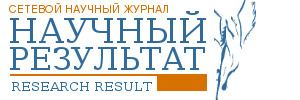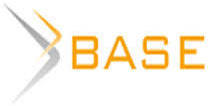Интеграция промышленного туризма в образовательный процесс как модель профориентации и трудового воспитания школьников
Aннотация
В статье рассматриваются вопросы в области организации работы по трудовому воспитанию школьников в рамках развития промышленного туризма в регионе. Трудовое воспитание играет важную роль в развитии ребенка и формировании его личности. Оно помогает детям осознать важность труда в жизни людей и вклад, который они могут внести в общество. Поэтому работа по трудовому воспитанию с детьми с раннего возраста имеет долгосрочные положительные последствия. Возвращаясь к этапам развития промышленного туризма в России, видим, что производственные экскурсии берут начало с развития школьных экскурсий. В современной методологии промышленного туризма упущен ключевой фактор: трудовое воспитание школьников и повышение престижа рабочих специальностей. Нами предлагается интеграция промышленного туризма в образовательный процесс как модель профориентации и трудового воспитания школьников.
К сожалению, текст статьи доступен только на Английском
Introduction. The development of industrial tourism is a relatively new but increasingly popular area of tourism in the region. Industrial excursions are an important means of labor education and career guidance for students, and they are of great educational and polytechnic importance (Volkov, Morozova, 2016).
There are 3 stages in the history of the global development of industrial tourism (Tanina, Sergeev, Konyshev, Tanin, 2022).
Fig. 1. Characteristics of the stages of industrial tourism development
Рис. 1. Характеристика этапов развития промышленного туризма
International experience shows that the successful realization of industrial tourism products in foreign companies consists in close cooperation and interaction with state and municipal authorities that support the promotion of services in this area.
In Russia, the experience of industrial tourism development has a long history, which can be divided into 3 main stages: pre-revolutionary, Soviet (from 1917 to the 1990s) and modern. Over the years, public sightseeing and industrial tourism have performed various tasks (Galoyan, 2018).
Fig. 2. Historical stages of tourism development in Russia
Рис. 2. Исторические этапы развития туризма в России
In the pre-revolutionary period, the first scientific methods of organizing the excursion process were formed in Russia, the development of the excursion business began and industrial tourism was born. In the late XIX and early XX centuries, teachers of individual Russian schools, private gymnasiums, and commercial schools, realizing the need to include excursions in the curriculum, began organizing visits to enterprises. Industrial excursions were part of educational activities, one of the forms of the lesson and part of extracurricular educational work with students.
The Soviet period of the development of the excursion business and industrial tourism was a stage (1917-1930) in the formation of the domestic industry and the excursion school. Industrial tourism at this stage is closely connected with the educational tasks of the Soviet government, with the improvement of the cultural and labor level of the masses of the people (Tsareva, Buzdyk, 2024).
In the early years of Soviet regime, the tour business developed at a faster pace than in the pre-revolutionary period, becoming an important phenomenon of the country's social life.
The excursion method has taken the first place among many means of labor education, and industrial tourism has become a priority. Excursion establishments widely promoted the first achievements of socialist construction and organized excursions to advanced construction sites, enterprises, and collective farms. Because of the great popularity of industrial excursions, work begins on developing a methodology for conducting them.
In order to attract tourists, employees of large enterprises published popular information about their facility.
The second stage (1930s-1980s) is characterized by the flourishing of industrial tourism in the system of Soviet sightseeing business. Tourism work in the country was led by the All-Union Voluntary Society of Proletarian Tourism and Excursions (VSPT), whose task was to introduce workers and peasants to their country. Visual demonstration of achievements in the development of the national economy occupied a large place in the content of travel.
Thus, in the first decades of Soviet power, industrial tourism developed rapidly, which was explained by the great tasks set by the Soviet government for the cultural and labor education of citizens. Industrial excursions have contributed to the improvement of production technology and the organization of the labor process in industrial and agricultural enterprises.
After the Great Patriotic War, when the national economy was rising, mass industrial excursions to existing enterprises began. In order for people to see the latest achievements of science and technology, to imagine how the party's policy is being implemented and the material and technical base of communism is being created.
Under the dominant state regulation of tourism development, state regulations gave a new impetus to the excursion business. One of them is the resolution of the Central Committee of the Communist Party of the Soviet Union, the Council of Ministers of the USSR and the All-Union Central Council of Trade Unions dated 05.30.1969 "On measures for the further development of tourism and excursions in the country." At the turn of the century, the economy declined, and a time of deep uncertainty came in the Russian industry, when interest not only in industrial tourism, but also in production at all levels turned out to be close to zero. The Ministry of Education of the USSR created the Central Children's Tourism. Regional children's excursion and tourist stations developed production excursions in accordance with the school curriculum on certain topics of natural science and humanities subjects. Industrial enterprises that survived perestroika and the transition to a market economy remained in a clear minority (Yashalova, Akimova, Ruban, Boyko, Usova, Mustafaeva, 2017; Zinich, 2023).
In the XX century, there is a revival not only of industry, but also of domestic tourism, new attractive routes are being formed, and new destinations are opening up. A new marketing tool has appeared in the arsenal of enterprises and travel companies – industrial tourism. In the Strategy for the Development of Tourism in the Russian Federation for the period up to 2035 (approved by Decree of the Government of the Russian Federation dated 09.20.2019 No. 2129-r), industrial tourism is defined as “visits and events at the facility that allow visitors to understand the processes and production secrets related to the past, present or future (The state standard of the Russian Federation, identical to the international standard ISO 13810-2016 Tourist services. Industrial tourism. Provision of services)”.
The aim of the work. Industrial tourism is becoming one of the main directions of strategic development of tourism in the Russian Federation. In 2019, the Agency for Strategic Initiatives assumed the mission of revival and supported the initiative to resume an integrated approach to the development of industrial tourism in Russia. The first stage of the industrial tourism development initiative was the creation of a Methodology for organizing industrial tourism in the regions of the Russian Federation, where step-by-step instructions for their implementation were formed. It is the comprehensive work on the development of industrial tourism that contributes to the sustainable positioning of the industrial potential of the Russian Federation in domestic and foreign markets (Gordienko, 2021).
However, in the methodology for the development of industrial tourism in the Russian Federation, in Section 02 "Development and implementation of regional strategies for the development of industrial tourism", the key figures for whom and why industrial tourism is needed are highlighted: the region, enterprises, and the tourism industry (Fig. 3).
Fig. 3. Objects of interaction in the implementation of regional strategies for the development of industrial tourism
Рис. 3. Объекты взаимодействия при реализации региональных стратегий развития промышленного туризма
Returning to the stages of the development of industrial tourism in Russia, we see that industrial excursions originate from the development of school excursions, industrial tourism is closely linked to labor education, with an increase in the cultural and labor level of the development of the masses.
Materials and Methods. In the modern methodology of Industrial tourism, a key factor has been overlooked: the labor education of schoolchildren and the increase in the prestige of working professions.
Labor education of schoolchildren and increasing the prestige of working professions is currently a key area for the development of industrial tourism in the region. The current unfavorable situation in the regional labor market, associated with a shortage of working professions in industrial enterprises, underlines the need for a professionally trained younger generation (Gutova T.A., 2013). It is possible to decide this problem only through the inclusion of industrial excursions in the educational plan of the school year (taking into account the age and cognitive characteristics of schoolchildren) of basic general education programs on a constant basis (Shelestov, Kovazhenkov, 2024)
Results and Discussion. Figure 4 shows the author's model of interaction between the main stakeholders in the development of industrial tourism: government authorities, universities, industrial tourism facilities, educational institutions and tour desks.
Industrial tourism should be of interest to enterprises, since from childhood the consumer of a particular brand's products will be formed and promoted; increasing the prestige of engineering and working professions, stimulating the interest of schoolchildren in these professions; reducing part of the cost of marketing and individual advertising of their products, as well as attracting staff, it is possible to concentrate forces (including financial) to improve product quality (GOST R ISO 13810-2016).
Regional government authorities – promotion of the region, both at the state and international levels; positive image and investment attractiveness; promotion and formation of regional brands; demonstration of successful enterprises; development of the export potential of enterprises in the region; development of small and medium-sized businesses; budget revenues from the sale of goods and services; professional orientation for schoolchildren and students; development of business and international tourism through the exchange of experience; attraction of professional staff; development of the tourism industry; creating conditions for the creation of a new type of non-primary exports (Andreychenko, Mukhina, 2022).
Fig. 4. Model (algorithm) of interaction between the main stakeholders in the development of industrial tourism
Рис. 4. Модель (алгоритм) взаимодействия основных заинтересованных сторон в развитии промышленного туризма
Local governments – it becomes possible to receive additional funds to the budget.
Educational institutions also decide important tasks through field trips. First of all, it is the education of respect and interest in work, as well as a step towards personal and professional education (Zhizhileva, 2017; Zhukovets, 2021).
The algorithm of the process of organizing career guidance and labor education of schoolchildren is shown in Figure 5.
Fig. 5. Diagram of the process of organizing career guidance and labor education of schoolchildren
Рис. 5. Схема процесса организации профориентации и трудового воспитания школьников
Small business entities – development of small and medium-sized businesses in tourism; creation of new jobs; development of service and hospitality infrastructure.
The tour desk is a new popular tourist product; a tool for increasing the tourist flow to the region; expanding the range of tourist services; developing business and international tourism; developing cultural and educational tourism; developing children's tourism and promoting educational programs; developing vocational guidance for schoolchildren; developing thematic tours; developing weekend tours (Zinich, 2023).
Higher education institutions – diversification of the educational process (practice-oriented approach), career guidance of students; interaction with the enterprise (joint projects); employment of graduates (Morozov, 2022).
Tourist – increasing the degree of satisfaction of needs, knowledge gained from familiarization with production secrets, technological processes, product history, and others (Polyanina, Dokashenko, 2014).
Conclusions. So, the development of the modern economy requires the development and implementation of effective methods that will contribute to the formation of a civic position, a system of values and labor education among the younger generation. The absorption of the modern generation by a variety of gadgets, the prevalence of TV shows and entertainment in the media have provoked a rejection of the prestige of working professions, and a lack of interest in active cognitive activity. Students should learn to think, discuss, and develop their knowledge as they grow up and form their own worldview and individual path of development. Tourism and local history work will contribute to the formation of these qualities in schoolchildren.
The tourist and excursion direction contributes to the creation of conditions for professional self-determination and personal self-development of students through industrial tourism, and also helps to form their life vocation and purpose, their own vision and assessment of events.
Demonstrating the industrial might of our native land is a very effective way of parenting the spirit of patriotism and pride in people, and above all in young people.
Industrial tourism is considered as a catalyst for the regional economy, allowing not only to use the entire range of recreational resources, but also to make the most effective use of the industrial and socio-cultural potential of the territory. The Belgorod Region has a strong potential for the development of industrial tourism, which can provide the territory with additional development opportunities.
















Список литературы
ГОСТ Р ИСО 13810-2016. Национальный стандарт Российской Федерации. Туристские услуги. Промышленный туризм // Электронный фонд правовой и нормативно-правовой информации. URL: http://docs.cntd.ru/ (дата обращения: 12.09.2025).
Андрейченко Е. В., Мухина И. И. Рынок труда туризма и индустрии гостеприимства: кризис или новые возможности // Актуальные вопросы современной экономики. 2022. № 10. С. 166-182. DOI 10.34755/IROK.2022. 13.16.015.
Волков С.К., Морозова И.А. Нужно ли развивать в России промышленный туризм? // Актуальные научные исследования в современном мире. 2016. № 8-1. С. 26-30.
Галоян Д. Р. Особенности промышленной политики России в эпоху структурных изменений / Д. Р. Галоян, В. В. Карапетян, О. М. Мазуренко // Экономическая наука сегодня. 2018. № 7. С. 76-83.
Гордиенко С.В. Основные направления технологических инноваций в воспроизводстве туристских продуктов // Вопросы инновационной экономики. 2021. Т. 11. № 3. С. 1197-1214.
Гутова Т.А. Промышленный туризм как новый тренд в системе глобального потребления // Актуальные проблемы гуманитарных наук: сб. науч. тр. XII междунар. науч.-практ. конф. студентов, аспирантов и молодых ученых. Тюмень, 2013. С. 49-5.
Жижилева К.А. Промышленный туризм: тенденции развития в России // Дизайн. Искусство. Промышленность: междунар. журнал науч. исслед. 2017. Вып. 4. С. 69-73.
Жуковец М. В. Профессиональная подготовка кадров для сферы туризма как возможность развития внутреннего туризма регионов (аналитический обзор) // Корпоративное управление и инновационное развитие экономики Севера: Вестник Научно-исследовательского центра корпоративного права, управления и венчурного инвестирования Сыктывкарского государственного университета. 2021. Т. 1. Вып. 1. С. 104-108. DOI: 10.34130/2070-4992-2021-1-1-104.
Зинич А. В. Профессиональные и жизненные цели современной молодежи // Научный результат. Технологии бизнеса и сервиса. 2023. Т. 9. № 4. С. 146-152. DOI: 10.18413/2408-9346-2023-9-4-1-2.
Морозов М.А. Инновационные решения в индустрии туризма и гостеприимства в условиях новой реальности // Вестник Академии знаний. 2022. № 2 (49). С. 195-200
Полянина С.С., Докашенко Л.В. Сущность промышленного туризма и его виды // Университетский комплекс как региональный центр образования, науки и культуры: материалы всерос. науч.-метод. конф. Оренбург, 2014. С. 1773-1776.
Танина А. В., Сергеев Д. А., Конышев Е. В., Танин Е. Ф. К вопросу о направлениях исследования промышленного туризма // Бизнес. Образование. Право. 2022. № 1 (58). С. 158- 170. DOI: 10.25683/VOLBI.2022.58.170.
Царева Н.А., Буздык К.С. Привлечение молодых специалистов на производственные предприятия: современные подходы и инструменты // Естественно-гуманитарные исследования. 2024. № 5 (55). С. 654-659.
Шелестов Н.В., Коваженков М.А. Повышение эффективности процессов привлечения персонала на промышленных предприятиях // Прогрессивная экономика. 2024. № 5. С. 124-140.
Яшалова Н.Н., Акимова М.А., Рубан Д.А., Бойко С.В., Усова А.В., Мустафаева Э.Р. Перспективы регионального развития промышленного туризма в свете анализа основных экономических показателей российской туриндустрии // Экономические и социальные перемены: факты, тенденции, прогноз. 2017. Т.10. № 2. С. 195-213.